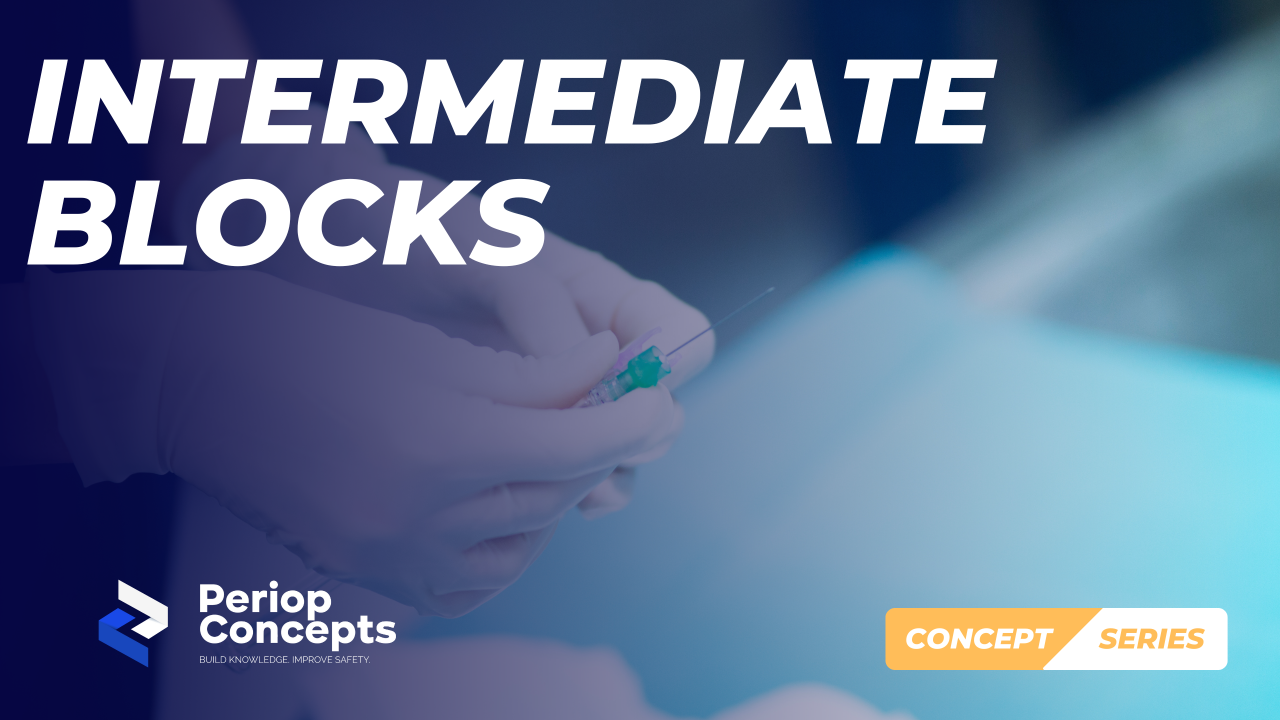Intermediate blocks
Oct 27, 2025
Navigating the Planes – Intermediate Regional Blocks Explained 🏥
Intermediate blocks, also known as fascial plane blocks, bridge the gap between superficial local anaesthetic infiltration and deep or neuraxial techniques. These blocks involve the deposition of local anaesthetic within anatomical fascial planes to provide targeted regional anaesthesia/analgesia to particular dermatome areas, without the unwanted motor blockade that comes with bigger/deeper/neuraxial blocks. 🌿
Here’s a breakdown of common intermediate blocks, including their targeted sites and main indications for use. These may be done under ultrasound guidance by an anaesthetist, or under direct vision by a surgeon:
🔹 TAP (Transversus Abdominus Plane):
Site – between internal oblique and transversus abdominus muscles
Indications – Laparoscopic, gynae, hernia and bowel resection surgeries
Area covered – T7–L1 (anterior abdominal wall)
Duration – 6–12 hrs
🔹 Rectus Sheath:
Site – between rectus abdominus and posterior rectus sheath
Indications – Midline incisions, umbilical hernia, port sites
Area covered – T7–T12 (midline anterior abdomen)
Duration – 6–10 hrs
🔹 Ilioinguinal / Iliohypogastric:
Site – Around ilioinguinal and iliohypogastric nerves near ASIS (anterior superior iliac spine)
Indications – Inguinal hernia, appendicectomy, C-section
Area covered – L1 (groin, suprapubic area)
Duration – 6–10 hrs
🔹 Quadratus Lumborum:
Site – Adjacent to quadratus lumborum muscle (anterior/lateral/posterior variants)
Indications – Major abdominal, renal, pelvic and hip surgeries
Area covered – T6–L1 with potential visceral spread
Duration – 12–24 hrs
🔹 Erector Spinae:
Site – Deep to erector spinae muscle at transverse process
Indications – Thoracic surgery, rib fractures, mastectomy, laparotomy
Area covered – Variable T2–L3 depending on level of insertion
Duration – 8–24 hrs (longer with infusion)
🔹 PECS I / PECS II:
Site – Between pectoralis major and minor (I), minor and serratus anterior (II)
Indications – Breast surgery, axillary dissection, pacemaker insertion
Area covered – T2–T6 (anterolateral chest wall)
Duration – 6–10 hrs
🔹 Serratus Anterior Plane (SAP):
Site – Superficial or deep to serratus anterior at mid-axillary line
Indications – Breast, thoracotomy surgeries and rib fractures
Area covered – T2–T9 (lateral thoracic wall)
Duration – 6–12 hrs
Nursing care for these blocks should involve routine monitoring, assessment of block efficacy and analgesia, and observation for complications such as LAST. As always, clear and accurate documentation of the block is essential to ensure patient safety, effective ongoing analgesia and continuity of care. ❤️
Build Knowledge ✅
Improve Safety ✅
References:
Australian and New Zealand College of Anaesthetists. (2014). Guideline for the management of major regional analgesia (PG03-A). https://www.anzca.edu.au/getContentAsset/a70212ec-6074-4fa5-a62b-742f1f64523a/80feb437-d24d-46b8-a858-4a2a28b9b970/PG03(A)-Guideline-for-the-management-of-major-regional-analgesia-2014.PDF?language=en&view=1
Lindsey May, P., & Wojcikiewicz, T. (2022). Regional anaesthesia and fascial plane blocks for abdominal surgery: A narrative review. Digestive Medicine Research, 5. https://doi.org/10.21037/dmr-21-83
Webster, K. (2020). The transversus abdominis plane (TAP) block: Abdominal plane regional anaesthesia. Update in Anaesthesia. https://resources.wfsahq.org/wp-content/uploads/uia24-1-The-Transversus-Abdominis-Plane-TAP-block-Abdominal-plane-regional-anaesthesia.pdf
Stay connected with news and updates!
Join our mailing list to receive the latest news and updates from our team.
Don't worry, your information will not be shared.
We hate SPAM. We will never sell your information, for any reason.


